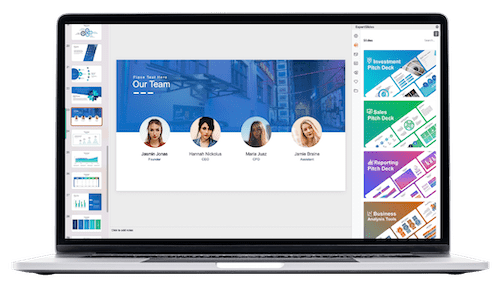Data Presentation Examples in Research – From Charts to Infographics
Table of Contents
Data presentation is a vital component of any research study, as it entails the visual representation of data to effectively convey findings and insights to the target audience. The methods of presenting data in research are diverse, ranging from simple charts to complex infographics, each with its own advantages and suited for conveying different types of information. This article aims to delve into the significance of data presentation in research, examine the various data presentation methods, and provide guidance on selecting the most appropriate method for a particular research study.
Additionally, it will cover the creation of effective charts, the application of infographics, best practices for presenting data in research, and feature examples of successful data presentation in research studies.
Key Takeaways
- Data presentation is crucial in research as it helps to effectively communicate findings and insights to the audience.
- There are various methods for presenting data, including charts, graphs, and infographics, each with its own strengths and weaknesses.
- When choosing a data presentation method, it’s important to consider the type of data, the audience, and the message you want to convey.
- Creating effective charts for data presentation involves choosing the right type of chart, simplifying the design, and ensuring clarity and accuracy.
- Infographics are a powerful tool for data presentation, as they can visually represent complex information in a clear and engaging way.
Importance of Data Presentation in Research

The Role of Data Presentation in Research
Effective data presentation allows researchers to communicate their findings and insights in a way that is easy for others to interpret and analyze. This, in turn, facilitates a deeper understanding of the data, enabling the audience to identify key trends and patterns that may have otherwise gone unnoticed.
Enhancing the Impact of Research
Moreover, data presentation can significantly enhance the overall impact of research, making it more engaging, memorable, and shareable. In today’s digital age, where information overload is a common challenge, researchers must find innovative ways to present their data in a way that cuts through the noise and resonates with their audience.
Visualizing Data for Maximum Impact
Data presentation methods such as charts, infographics, and other visualizations can help researchers convey their message in a clear and concise manner, making a lasting impression on their audience. By leveraging these methods, researchers can unlock the full potential of their data, ensuring that their findings are not only accessible but also actionable and impactful.
Types of Data Presentation Methods
There are various types of data presentation methods that researchers can use to effectively communicate their findings. Some of the most common methods include charts, graphs, tables, and infographics. Charts and graphs are often used to visually represent numerical data, making it easier for the audience to understand trends and patterns.
Tables, on the other hand, are useful for presenting large amounts of data in a structured format. Infographics are a more modern and visually appealing method of presenting data, combining text, images, and graphics to convey complex information in a concise and engaging manner. Each data presentation method has its own strengths and weaknesses, and the choice of method will depend on the type of data being presented and the intended audience.
For example, if the research study involves a lot of numerical data, charts and graphs may be the most effective method for presenting the findings. On the other hand, if the research study involves a lot of qualitative data or complex relationships between variables, infographics may be a more suitable method for presenting the information. Ultimately, the key is to choose a method that best conveys the main findings of the research in a clear and engaging way.
Choosing the Right Data Presentation Method for Your Research
| Types of Data Presentation | Advantages | Disadvantages |
|---|---|---|
| Charts | Easy to understand, visually appealing | May not be suitable for complex data |
| Infographics | Engaging, can convey a lot of information | May oversimplify complex data |
| Tables | Precise, easy to compare values | Not visually appealing, may be overwhelming |
When choosing a data presentation method for your research, it is important to consider the type of data being presented, the intended audience, and the main message you want to convey. If your research study involves a lot of numerical data and you want to highlight trends and patterns, charts and graphs may be the most effective method for presenting the findings. On the other hand, if your research study involves complex relationships between variables or qualitative data, infographics may be a more suitable method for presenting the information.
It is also important to consider the preferences and expectations of your audience when choosing a data presentation method. For example, if your audience is more visually oriented and prefers engaging and interactive content, infographics may be the best choice for presenting your findings. On the other hand, if your audience is more traditional and prefers straightforward and detailed information, charts and graphs may be more suitable.
Ultimately, the key is to choose a method that effectively conveys the main findings of your research in a way that resonates with your audience.
How to Create Effective Charts for Data Presentation
Creating effective charts for data presentation involves careful consideration of the type of data being presented and the main message you want to convey. When creating charts, it is important to choose the right type of chart that best represents the data. For example, if you want to show trends over time, a line chart may be the most effective choice.
On the other hand, if you want to compare different categories or groups, a bar chart or pie chart may be more suitable. It is also important to ensure that the chart is visually appealing and easy to understand. This involves choosing the right colors, fonts, and layout to make the chart visually engaging and easy to interpret.
Additionally, it is important to provide clear labels and titles for the chart to ensure that the audience understands the main message being conveyed. Overall, creating effective charts for data presentation involves careful consideration of the type of data being presented and thoughtful design choices to make the chart visually appealing and easy to understand.
Utilizing Infographics for Data Presentation

Designing for Clarity
When utilizing infographics for data presentation, it is important to carefully consider the layout and design to ensure that the information is presented in a clear and visually appealing way. This involves choosing the right images and graphics to complement the text and convey the main message of the research study.
Organizing Content for Easy Understanding
It is also important to ensure that the information is presented in a logical and easy-to-follow manner. This involves organizing the content in a way that flows naturally and guides the audience through the main findings of the research study. Additionally, it is important to keep the text concise and focused on conveying key insights, while using visuals to enhance understanding and engagement.
Thoughtful Design for Engagement
Overall, utilizing infographics for data presentation involves thoughtful design choices and careful consideration of how best to convey complex information in a visually appealing and engaging way.
Best Practices for Presenting Data in Research
When presenting data in research, there are several best practices that researchers should keep in mind to ensure that their findings are effectively communicated to their audience. One best practice is to keep the presentation clear and concise, focusing on conveying key insights without overwhelming the audience with too much information. This involves carefully selecting which data to present and how best to present it in a way that is easy to understand.
Another best practice is to use visuals such as charts, graphs, tables, and infographics to enhance understanding and engagement. Visuals can help to highlight key trends and patterns in the data, making it easier for the audience to grasp the main takeaways from the research study. Additionally, visuals can make the presentation more engaging and memorable for the audience.
It is also important to consider the preferences and expectations of your audience when presenting data in research. This involves tailoring your presentation style and content to resonate with your audience and effectively convey your message. By keeping these best practices in mind, researchers can ensure that their findings are effectively communicated and have a lasting impact on their audience.
Examples of Successful Data Presentation in Research Studies
There are many examples of successful data presentation in research studies that effectively communicate key findings and insights to their audience. One example is a study on climate change that utilized infographics to convey complex information about rising global temperatures, melting ice caps, and extreme weather events. The use of infographics helped to make this complex information more accessible and engaging for a wider audience.
Another example is a study on consumer behavior that utilized charts and graphs to highlight key trends in purchasing habits and preferences. The use of visuals helped to make this numerical data more understandable and memorable for the audience. Overall, these examples demonstrate how effective data presentation methods can greatly enhance the impact and accessibility of research findings.
In conclusion, data presentation is a crucial aspect of any research study that involves visual representation of data to effectively communicate findings and insights to the audience. There are various methods of presenting data in research including charts, graphs, tables, and infographics. Each method has its own advantages and can be used to convey different types of information.
When choosing a data presentation method for your research, it is important to consider the type of data being presented, the intended audience, and how best to convey your message. By utilizing effective charts for data presentation and infographics for conveying complex information in a visually appealing manner, researchers can ensure that their findings are effectively communicated and have a lasting impact on their audience.
FAQs
What are data presentation examples in research?
Data presentation examples in research refer to the various ways in which data can be visually represented and communicated to an audience. This can include charts, graphs, tables, infographics, and other visual aids.
Why is data presentation important in research?
Data presentation is important in research because it helps to effectively communicate the findings and insights derived from the data. Visual representations of data can make complex information easier to understand and interpret for a wider audience.
What are some common data presentation examples in research?
Common data presentation examples in research include bar charts, line graphs, pie charts, scatter plots, tables, histograms, and infographics. Each type of visual aid is suited for different types of data and research objectives.
How do researchers choose the right data presentation method?
Researchers choose the right data presentation method based on the type of data they have, the research questions they are addressing, and the audience they are communicating with. Factors such as the nature of the data, the relationships being explored, and the key messages to be conveyed all influence the choice of data presentation method.
What are the benefits of using infographics for data presentation in research?
Infographics offer a visually appealing and engaging way to present complex data and information. They can help to simplify and clarify key messages, making it easier for audiences to understand and remember the research findings. Infographics are also easily shareable and can be effective for reaching a wider audience.
Get 15+ Mio. PowerPoint Assets - FREE SIGN-UP

Sign up for free to our PowerPoint extension, ExpertSlides. Everything you need, directly in PowerPoint. No credit card required.
Related Posts
Recent Posts
Main Menu
Knowledge base
Useful Links






